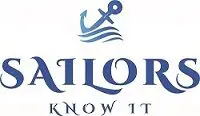Long range identification and tracking Requirement, Transmission, obtain LRIT data
LRIT
Long range identification and tracking.
Global identification and tracking using satellite.
LRIT Requirement / regulation
SOLAS chapter 5 regulation 19.1
Passenger ship including high speed craft
Cargo ship 300 grt and above including high speed craft
Mobile offshore drilling unit
Report position to flag at least four times a day.
LRIT Transmission
Report position to flag at least four times a day or at an interval of every 6 hours.
Also, when required, at an interval of every 15 minutes.
LRIT data – Ship’s ID, position, time and date.
LRIT working concept / content
Shipborne transmitter
Communication service provider
Application service provider
Data centre
Data distribution plan
International data exchange
Ship to satellite
Satellite to CSP
CSP to ASP
ASP to DC
DC to IDE, after receiving feedback from DDP
Criteria to obtain LRIT data
Flag state: flag state have full access to ship under it’s flag.
Port state: port state can poll and track ship which is bound to it’s port.
Coastal state: coastal state can poll and track ship within 1000 NM of it’s coast.
SAR: SAR services can request LRIT data for any particular SAR area.
Contracting Governments can receive LRIT information, upon request.


